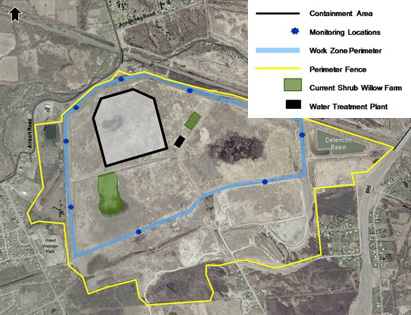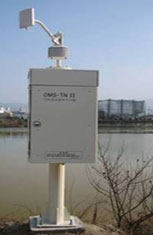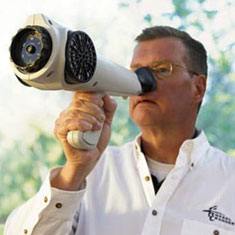State Environmental Authorities Release Community Health and Safety Plan for Initial Construction Activities
Comprehensive efforts to protect the public’s health and safety are an integral part of the work to restore Onondaga Lake. Health and safety plans are reviewed by the New York State Department of Environmental Conservation (DEC) and the New York State Department of Health (DOH), and are incorporated into every stage of the restoration. These plans include management and monitoring that exceed government requirements and industry standards.
The DEC today released the Health and Safety plan for the construction of the containment area to hold materials removed from the lake, as well as the initial work for the water treatment plant. These activities are scheduled to begin in 2010. For construction scheduled for 2011 and 2012, this plan will be augmented to include health and safety plans for those activities. A separate health and safety plan will be developed for operational activities starting in 2012.
The 2010 construction activities will include clearing trees and shrubs, improving roads, bringing in clean dirt, grading, excavating, surveying and building a portion of the liner system for the containment area. This work is similar to construction of commercial and infrastructure projects. Hours of operation will be from 6:00 a.m. to 8:00 p.m. The Health and Safety plan for the initial construction activities includes:
- An air monitoring program, operating during the entire project, will measure air quality around the work zone. There will be eight fixed monitoring locations. The monitors (shown in the graphic below) will encircle the work zone. During construction activities, the air will be continuously monitored for dust and volatile organic compounds (VOC) to ensure concentrations at the perimeter of the work zone remain below government criteria.The DOH has established action levels. To provide additional assurance, the equipment will be set at lower action levels. If this lower action level is exceeded additional dust suppression measures (such as increasing the use of water or reducing equipment speeds) will be implemented. If DOH action levels are exceeded, the work generating the dust or VOCs will be stopped and there will be a reevaluation of the work.Results of the monitoring will be available to the public on Honeywell’s website, www.onondaga-lake-initiatives.com.
- Background air monitoring
To establish an understanding of background air quality at the work zone, prior to construction activities taking place, two weeks of baseline dust and VOC monitoring will be conducted. This information will help to identify pre-existing sources and locations of dust and/or VOC generation in this area. - Dust control measures will ensure dust does not leave the work area. If dust exceeds DOH established limits, the work generating the dust will be stopped and activities will be re-evaluated.
- Noise monitoring will be conducted to proactively reduce noise coming from construction equipment and operations. A sound-level meter will be used at the eight locations along the work zone to measure noise generated from construction activities. Measurements will be conducted twice a day to ensure compliance with action levels. If noise levels are exceeded, increased monitoring will identify the cause of the noise. If levels continue to be exceeded, the associated work will be stopped until the cause of the noise has been addressed.
- Odor monitoring will be performed by trained observers who will use field olfactometers. If those measurements exceed acceptable levels, the source of the odors will be investigated, and, if it’s determined they are caused by construction activities, measures such as using fire hoses to wet down excavations, applying foaming agents, or rescheduling activities for days with better weather conditions will be implemented.
- Site security will be enhanced to restrict public access to the site.
Plan details can be found in the Water Treatment Plant Preloading and Sediment Consolidation Area 2010 Construction Community Health and Safety Plan (dated June 2010). The DEC Fact Sheet about the health and safety plan, as well as other information on the Onondaga Lake cleanup, is available online atwww.dec.ny.gov/chemical/52545.html.
Individuals interested in more information should contact Honeywell at 315-552-9784.
For more information on the Onondaga Lake cleanup, visit www.onondaga-lake-initiatives.com.








